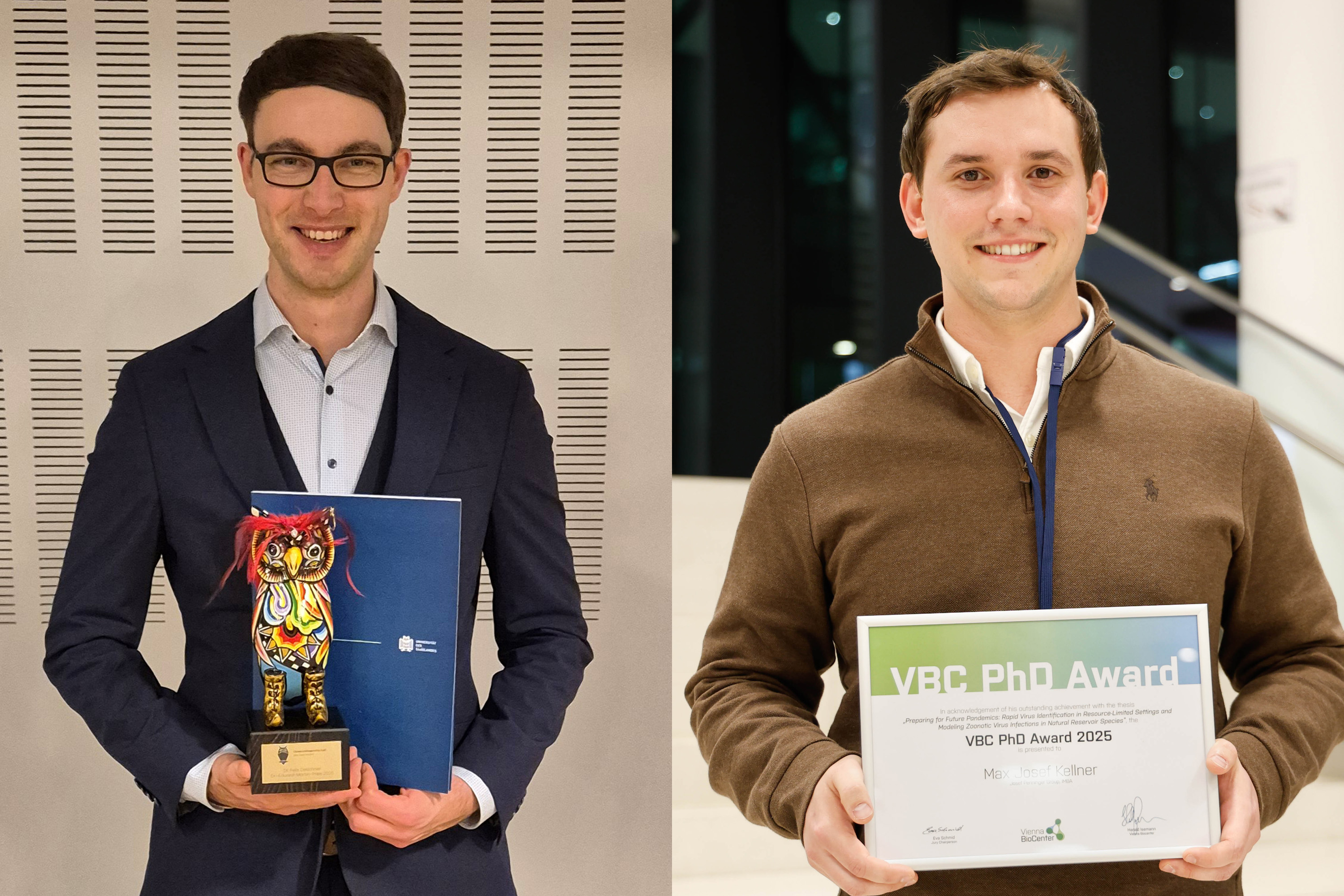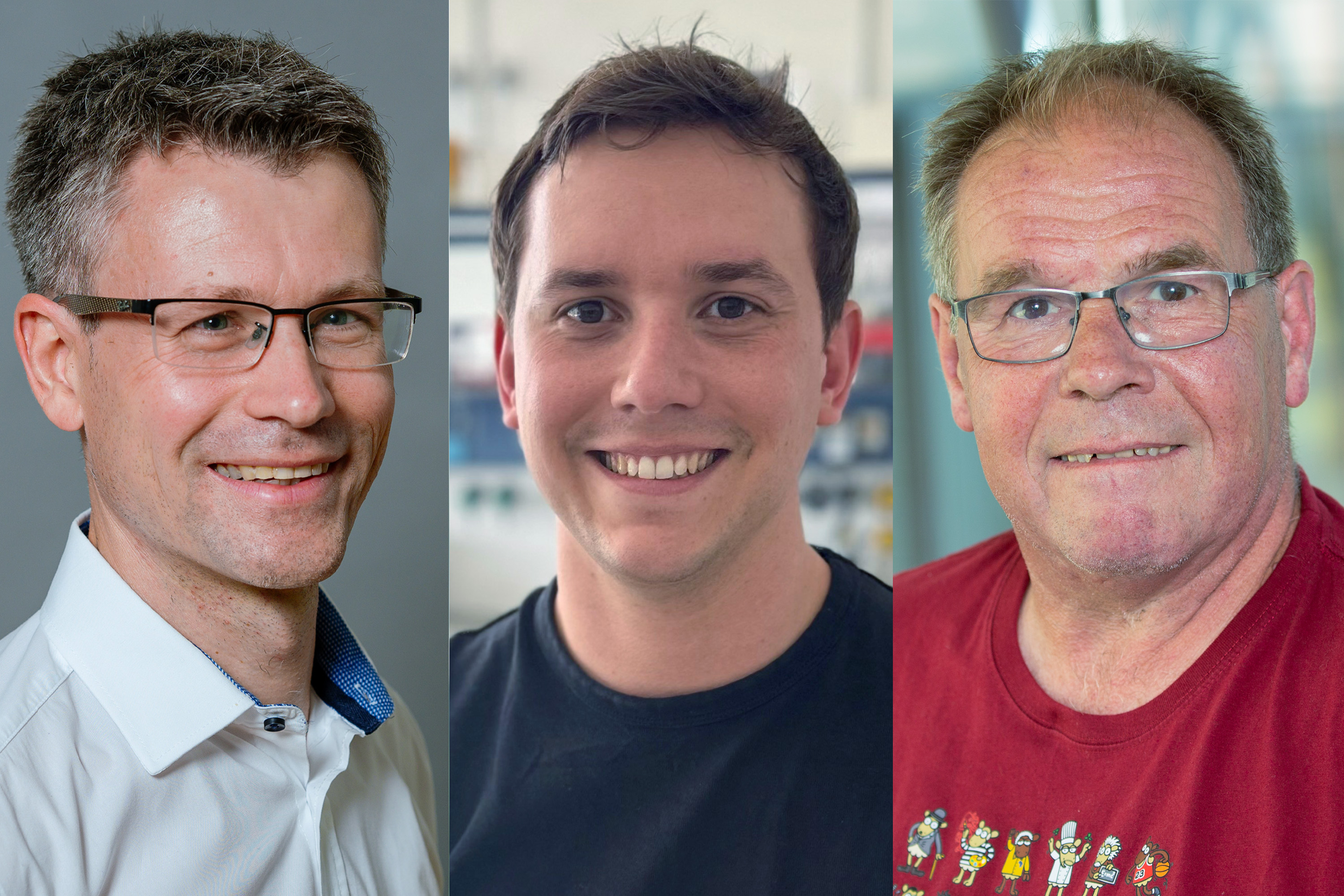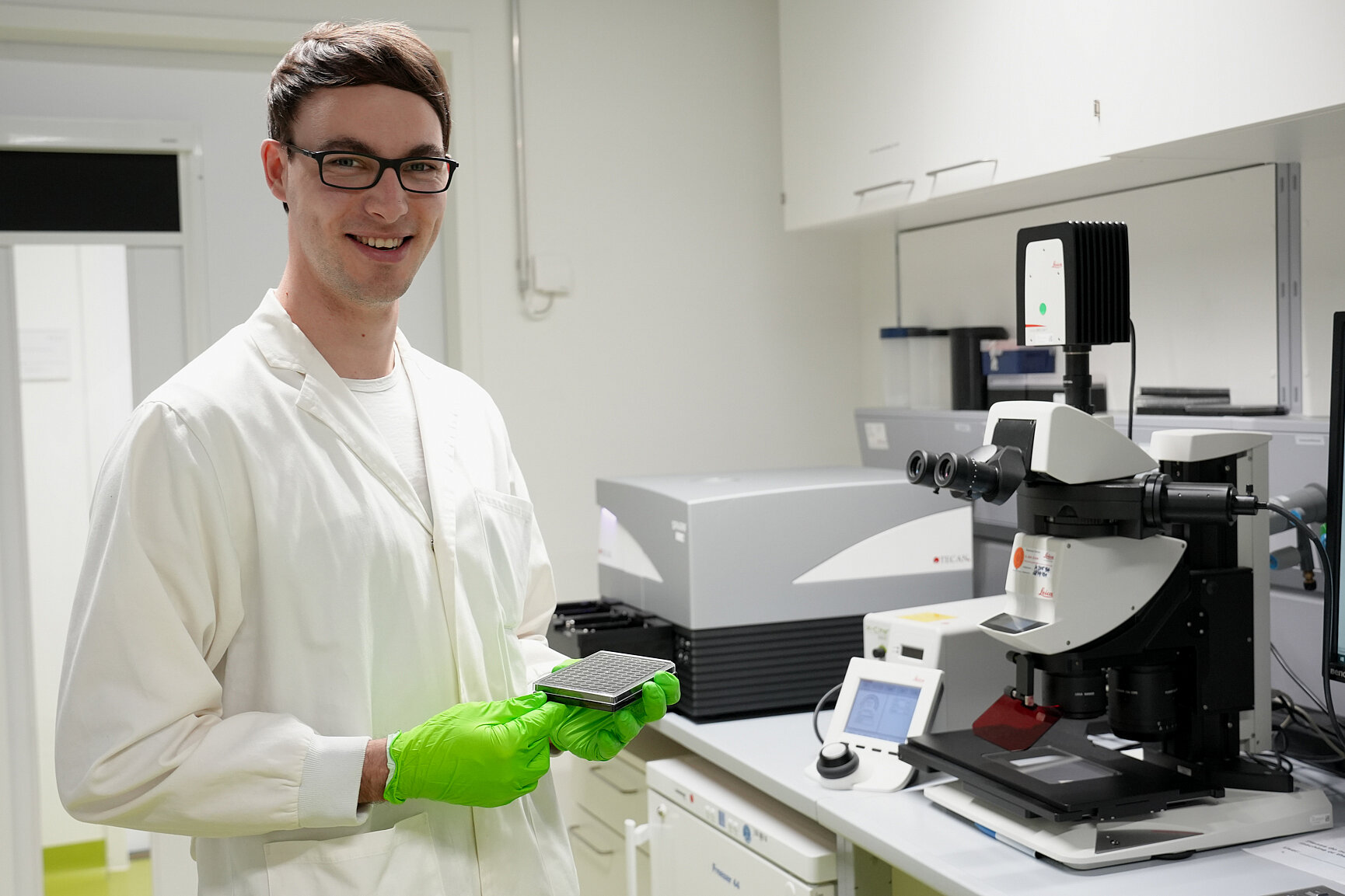A natural product antibiotic with a novel mode of action
Chlorotonils are a class of natural substances from the soil bacterium Sorangium cellulosum that are effective against the hospital germs Staphylococcus aureus and Enterococcus faecium. Researchers at the HIPS, a site of the HZI in cooperation with Saarland University, are optimizing the active ingredient class for possible future use as antibiotics. Dr. Felix Deschner investigated the mode of action of chlorotonils in his doctoral thesis in the HIPS department “Microbial Natural Products” under the supervision of Prof. Rolf Müller. He was able to show that chlorotonils bind to lipids in the cell membrane and disrupt the bacteria's potassium balance. “This previously rarely observed mode of action for antibiotics makes it difficult for the bacteria to develop resistance to the active substance,” says Deschner. For his groundbreaking research, he received one of this year's Eduard Martin Prizes from Saarland University. As a postdoc, Deschner is now working on further developing chlorotonils to optimize their efficacy and safety.
Resilience against zoonotic viruses
Bats can harbor viruses that are dangerous to humans, such as the Marburg virus, without becoming symptomatically ill themselves. Through thousands of years of co-evolution between virus and host, bats have developed a strong resilience to these viral diseases. Dr. Max Kellner, head of the junior research group “Laboratory for Virus-Host Co-Evolution” (VICO) in the HUMAN program of the HZI since April 2025, has investigated the cellular antiviral defense mechanisms in the mucous membranes of Egyptian fruit bats. To do so, he developed an organoid research platform in his doctoral thesis in the department of Prof. Josef Penninger at the IMBA. “Fruit bats may be better in controlling Marburg virus replication in the mucosa, while human cells restrict the virus less effectively during the early phase of the infection, allowing it to spread unhindered in the body,” says Kellner. With his junior research group VICO, he continues to use organoid systems and combines them with functional genetic analyses to investigate virus-host interactions in different species under near-physiological conditions.

![Dr Charlotte Schwenner [Translate to English:] Charlotte Schwenner](/fileadmin/_processed_/6/9/csm_Charlotte_Schwenner_7952cfe0a7.webp)



